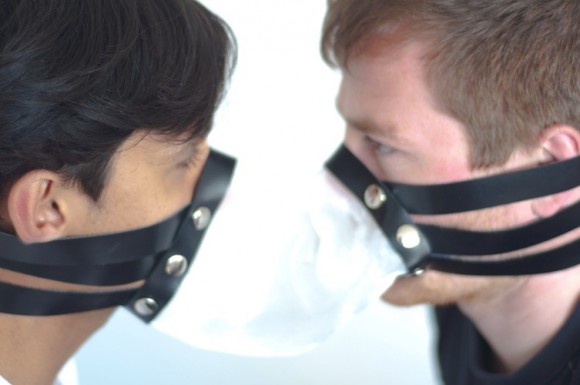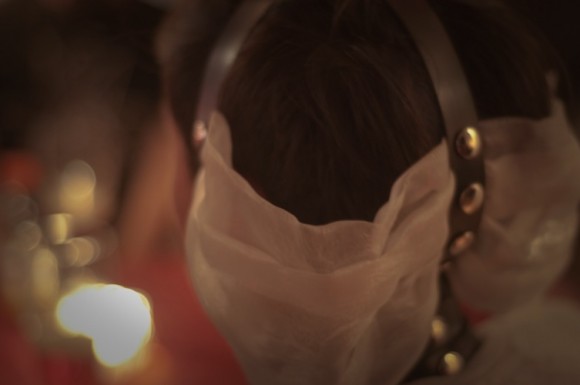A Protected Life – Speculations on object-mediated relationships

Electronic objects seem to be increasingly relevant in mediating our perception of reality. From mobile devices that keep us constantly reachable to digital cameras capable of applying beautifying effects to photo subjects, our interactions with others and our relationships with our own images have become profoundly related to technological artifacts. We are constantly shaping and adapting ourselves to technology; as the digital and real worlds bleed into each other in our daily routines, our online behaviours also become inextricably related to our physical reality. Search engines subtly filter results according to our personal profile; block or unsubscribe buttons offer immediate relief from invasive or unpleasant interactions within our online social circles; our personalities and images can be moulded, fragmented, displaced and distorted through the creation and careful curation of our online profiles. Filtering has become a necessary part of life.
What do these filtering behaviours, so deeply associated with our digital lives, mean to the relationships and interactions we develop in our analog, tangible lives? How are our notions of self-image, intimacy and social behaviour affected by our online lives? A small series of three headpieces, each associated with a specific moment and social situation in life, explores the possible consequences of these behaviours in the near future, hoping to incite reflection and raise questions regarding our dependence on objects in order to perceive the world around us.
Objects
Mirror Device


The control we exercise over our appearances in online environments has, perhaps, caused a divide with the physicality of our existence. As we become more and more accustomed to how we perceive and present ourselves in the digital world, our ‘real’ selves seem to have progressively become unfamiliar and uncanny. Granted, when confronted with candid, non-edited pictures or recordings of themselves, most people react with a mixture of unfamiliarity, discomfort and even horror that can sometimes seem borderline pathological. How and why did we become so detached from the non-curated versions of ourselves? Will future analog objects be influenced by our digital identities, complying with their set standards on what is desirable?
This object aims to explore these complex issues of identity through what is, perhaps, a more playful perspective. It consists of a small kit containing a mirror and a laser-cut tab fitted with several magnifying lenses. Pressure buttons allow the wearer to open and close the leather straps that hold the tab. The wearer can thus observe him or herself in the mirror through the magnifying and fragmenting lenses of the object.
Artificial Intimacy Device


This device is an experiment in intimacy and the appropriation of place. Sharing something has always been a token of intimacy between couples. Be it a small locket containing a loved one’s hair lock, commitment rings or passwords for accounts on social networks or email providers, having a tangible representation of commitment is an ancient practice that appears under a wide range of guises throughout history.
This object was designed as somewhat a ritualistic tool, aimed at creating a physical, tangible connection between partners. The object keeps two people closely bound together, as equals, while sharing a breathing device covered in a thin layer of organza fabric. While the fabric is too thin to accumulate enough CO2 for a damaging effect, it does promote an uncomfortable feeling of proximity, close enough to offer a (perhaps too) intense moment of intimacy.
In an era of instant communications, where couples can send each other emails and SMS messages throughout the day, will an object like this become a way of reconnecting within what is perceived as the ‘real’ world, creating a personal space inhabited only by two?
Device for Civilized Socialization


By activating the unsubscribe function on Facebook or by clicking on the unfollow button on Twitter one can stop receiving updates from a specific person in their social circle. The function doesn’t let the “unfollowed” person know that he or she has been, essentially, muted; the social faux-pas is avoided, offering a guilt-free pass to ignore whoever you may wish to without any consequences to the friendship or to anyone’s online social position.
This headpiece was developed as a speculative prototype on the extension of this online behavior into the physical realm. Fitted with a small microphone and two headphones embedded in its lining, the headpiece would be pre-programmed by its owner in order to recognize subjects of conversation or even certain people; whenever an undesirable topic comes up, the headpiece would emit through its headphones a blissfully soft cloud of pink noise in order to cancel out the voices of those around the wearer. Instead of asking her or his conversation partner to change topic or, worse, abruptly leaving an unpleasant conversation, the wearer is spared from having to endure unwanted discussions, whilst still maintaining an appearance of pleasant sociability.
Full Text
The full thesis text is available as a PDF.

